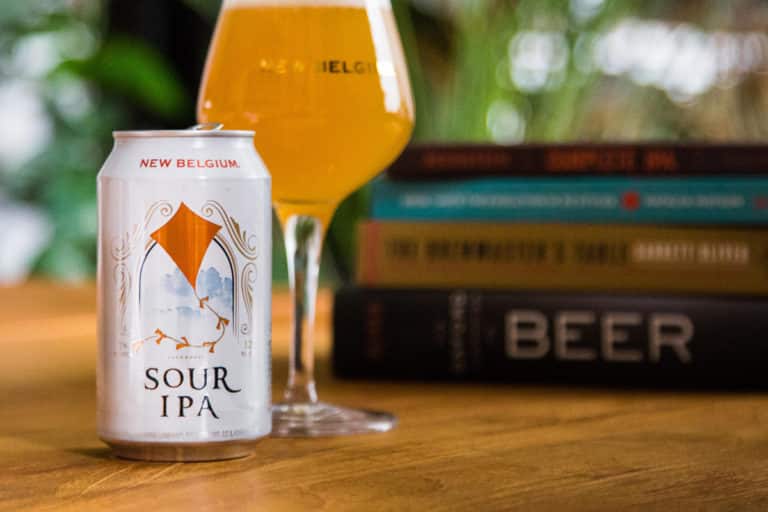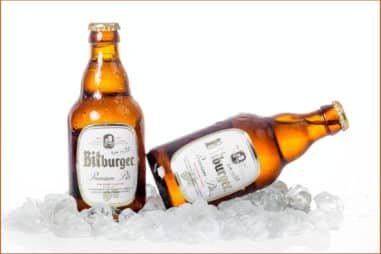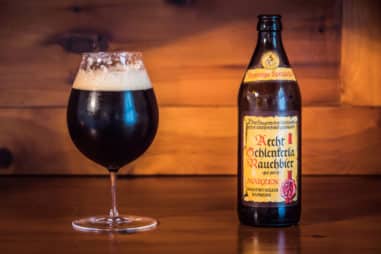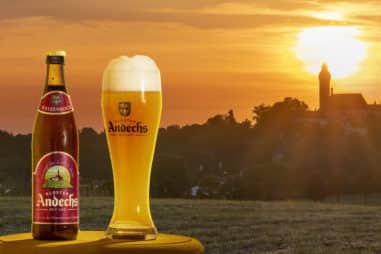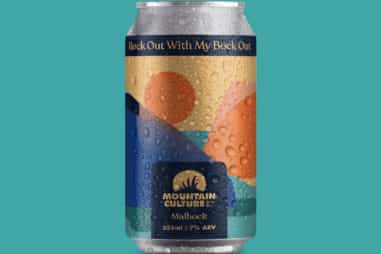Tangy. Bright. Juicy. And a bite of acidity that brings nostalgic memories of eating Sour Brite Crawlers. Now, that’s a great Sour IPA.
It combines all the great qualities of a New England IPA (NEIPA) and clean acidity. But what’s running through your head right now? Is it what makes an IPA sour? How is it made? Why would bitter and sour even be a mix?
Or better yet, what is a Sour IPA, to begin with? All those questions will be answered in this guide.
What Is a Sour IPA?
The short version? It’s the combination of an IPA and sour beer. If you want the long version, buckle up. This could get sour.
First off, Sour IPAs were inspired by its older brother or probably cousin — New England IPAs (NEIPAs).
What is a NEIPA? It’s a fruity, hoppy IPA with low bitterness and a smooth mouthfeel. The highlight of NEIPAs is that they’re ridiculously juicy. Or rather, fruity.
With NEIPAs, it’s almost like biting into ripe fruit. Now, combine that image you have of NEIPAs with sour beer or the tartness of something sour.
That’s a Sour IPA.
In fact, sour beers are the oldest beers in history. Before pasteurization or sterilization, most beers were generally sour.
Surprisingly, you’ll find a lot of different types of sour beer today.
Types of Sour Beer
- Flanders: Belgian beers that have sweet fruit and vanilla flavors with a mix of acidity. Red Flanders has a fruity taste, while Brown Flanders has raisin, plum, and earthy flavors.
- Gose: German sour beer that provides a balance of salty, sour, and herbaceous flavors.
- Lambic: Belgian wheat beer with light and tarty flavor notes. These sour beers are often mixed with cherry and raspberry.
- Berliner Weisse: German wheat beer that has a lemon tarty flavor. A Berliner Weisse will usually have high carbonation and low ABV.
So, here are key takeaways from all of this:
- Sour IPAs are a combination of an IPA and a sour beer.
- The taste of Sour IPAs is based off New England IPAs (NEIPAs).
- A Sour IPA will usually have a fruity, tarty, or tangy flavor. However, the best example would be clean acidity paired with all the great qualities of a NEIPA.
What Makes a Sour IPA?
This time, it’s not so much about the hops. Although fruity hops still play a huge role in making a Sour IPA.
So, who’s the star of Sour IPAs? It’s actually … 3 stars: wild yeast and two types of bacteria.
Wild Yeast
The wild yeast used to make a Sour IPA is Brettanomyces or Brett for short.
Here’s what’s weird. Brett actually ruins beer. Yup — it adds flavors and aromas that just don’t quite sit right … at all.
So why go for Brett? The main reason is for adding earthiness. With good balance, you’ll taste fruity and tarty flavors with a balanced layer of earthy notes.
Lactobacillus and Pediococcus
Tongue twister?
Lactobacillus is actually bacteria you find in yogurt. And it’s what makes yogurt taste sour or more specifically, a tartness sour.
But it’s not Lactobacillus that’s sour. It’s simply bacteria that turn sugar into lactic acid. So the next time you taste yogurt, you can thank Lactobacillus. Without it, there wouldn’t be any lactic acid. And without any lactic acid, yogurt would not have tarty sourness.
Now, what about Pediococcus? It’s mainly used to add acidity when brewing a Sour IPA. In the end, what makes a Sour IPA are these 3 souring agents that give it its tarty, acidic characteristic.
Take note, though, that the brewing process is also different (more on this later). Some recipes even include aging in oak barrels. This type of process is common when brewing Belgian sour beers.
What Does a Sour IPA Taste Like?
First off, a Sour IPA will have a similar hop profile, body, and mouthfeel to a NEIPA. That means low bitterness, soft or supple mouthfeel, high fruitiness or juiciness, and of course, sourness.
You’ll also taste some maltiness, but most of the acidity and fruity, tropical hoppiness will overpower the malty flavor.
However, the taste of Sour IPAs can vary, depending on the hops used. There’s a wide variety of fruity hops available today. So it’s not surprising if you taste a Sour IPA with dark chocolate, chamomile, milk sugar, and cherry notes.
One more thing. Sour IPAs should not taste bitter. Bitter and sour have never been a good combo. Just like how oil and water never mix, so shouldn’t bitter and sour.
Now you’re probably wondering … but IPAs have bitterness, right? You’re absolutely right. But the goal of making a Sour IPA isn’t to completely remove the bitterness. The goal is to soften the bitter taste of an IPA so that it harmonizes with the sourness or tarty element instead of clashing with it.
How Many Calories Are in a Sour IPA?
Now, that’s a tricky question. Sour beers typically have an ABV between 3% to 5%. To note, they’re generally regarded as session beers.
Due to the lower ABV, the calorie count is lower than your traditional IPA. But here’s the thing. Sour IPAs are a hybrid mix of an IPA and sour beer.
What does that mean then? It means that because IPAs usually have higher ABVs than most beers, a Sour IPA will most likely have a considerable amount of calories too.
Take for example New Belgium Brewing’s Sour IPA. It packs 200 calories for a 12 oz. (455 ml) can and has 7% ABV.
The reason behind this lies in two things:
- ABV
- Pour size
Now, let’s take a few steps back to understand how this affects the calories in a Sour IPA.
The first step in brewing beer is done through a process called mashing. It’s when you mix hot water and grains to create ‘mash.’
During the mashing process, the heat extracts the sugar from the grains used. After mashing, you get a sweet liquid called wort.
The wort is then boiled with hops and once it cools, brewers add yeast to the cooled wort. This signals the start of the fermentation stage. Once fermentation starts, the yeast that was added eats the sugar and converts it into alcohol.
Here’s where the calories come in. The calories in beer are mostly influenced by alcohol, which is influenced by the amount of sugar you used.
And where does the sugar come from? Grains. So, the more grains you use, the more sugar there is present for yeast to feed on. And the more sugar the yeast feeds on, the more alcohol you get.
Thus, a higher ABV.
Sour IPAs will have higher ABVs, typically from 5% to as high as 9%. The average calorie count for a 12 oz. (355 ml) can with 5% ABV is around 160 to 170 calories. For 9% ABV, that’s around 260 to 270 calories.
You’re looking at an average of 160 to 270 calories for a Sour IPA. However, if you get a 16 oz. (473 ml) can, the calories will be higher. Pour size also influences the calorie count. Put simply, the higher the volume, the more calories it packs.
How to Make a Sour IPA?
You’re already aware certain wild yeast and bacteria are used to make a Sour IPA. In case you forgot, here’s a quick recap:
- Lactobacillus is a bacteria added to the brewing process to turn sugar into lactic acid. This lactic acid adds tart sourness to a Sour IPA.
- Pediococcus is another bacteria meant to add acidity.
- Brettanomyces adds a layer of earthy tones to add balance to the Sour IPA
There’s one more crucial element needed to make Sour IPA, and that’s kettle souring.
What is kettle souring? It’s a technique that allows brewers to sour unfermented wort rapidly in a short period of time. This often takes only 24 hours to do. Here’s how it works:
- After the mashing process, you have a sweet liquid known as wort
- The wort is boiled for sanitation purposes and then cooled down to 75°F (24°C) to 95°F (35°C)
- Lactobacillus is added to the cooled wort and turns the sugar in the cooled wort into lactic acid
- After 1 to 3 days, you get the tarty sour flavor that makes a Sour IPA
This process is what sets Sour IPAs apart from a regular IPA. The souring agents, wild yeast, and the addition of Lactobacillus in the kettle souring process give Sour IPAs their unique beer style.
What Hops Are Used to Make a Sour IPA?
It’s advisable to stick to fruity and juicy hop varieties such as:
- Citra
- Mosaic
- Simcoe
- Galaxy
It’s also not necessary to add hops during the kettle boil. You can simply add all your hops during the whirlpool process.
The reason for not adding any hops during the kettle boil is to soften the bitterness. Put simply, Sour IPAs have a restrained or softened bitterness. Since adding hops during the kettle boil will extract most of the bitterness, brewers skip this step to prevent this from occurring.
Then again, some might opt to add hops during the boil, depending on the recipe. And this is perfectly fine too. However, only a very small number of hops would be added.
For the malts, oats, rye, and wheat are good malts to use since this adds a soft, supple mouthfeel to Sour IPAs. A good rule of thumb for the malts is to use high-protein malts in your grain bill. Wheat is a great high-protein grain to add.
What Is a Good Lactobacillus Strain to Use for Sour IPAs?
A good starter Lactobacillus strain to use would be Omega Yeast OYL-605. Alternatively, you can also use White Labs WLP67 or Fresh GoodBelly Probiotic Juice.
Take note that the microbes must stay healthy throughout the entire process. That being said, kegging and a closed transfer process are highly recommended.
Using a closed transfer process from your fermenter to a keg eliminates oxygen exposure and reduces your wort’s contact with air. As a result, this process keeps your yeast healthy and happy.
Can I Add Lactose to a Sour IPA?
Lactose or milk sugar is an optional ingredient you can add to a Sour IPA. What lactose does is it adds sweetness and softens the body.
If you plan to add lactose to a Sour IPA, a good ratio would be 1/2 lbs. of lactose for every 5-gallon batch (227 g per batch).
Where to Buy New Belgium Sour IPA?
You can buy a New Belgium Sour IPA on the brewery’s website or on online stores like Drizly and Minibar.
What Are Good Sour IPAs to Try?
New Belgium Brewing’s Sour IPA is definitely a must-try, but it’s not the only Sour IPA available. Here are good Sour IPAs worth trying:
- Wiley Roots Brewery Key Lime County Fair Cobbler (has lactose as an added ingredient)
- Sixpoint Brewery Party Pinata
- Commonwealth Brewing Magic Scones
- Hudson Valley Brewery Bloom
- Hudson Valley Brewery Plumage
- Hudson Valley Brewery Symmetrical Garden/Orbweaver
Who Would Enjoy Drinking a Sour IPA?
Sour IPAs lean more towards a niche brew. And although Sour IPAs aren’t as trendy as Haze IPAs, there’s no reason you shouldn’t experiment with new beer styles.
If you’re a sour beer fan, you’ll love a Sour IPA. In fact, some Sour IPAs are aged in oak barrels, giving them similar qualities to wine. And that means the flavors of a Sour IPA exist in a wide spectrum that could appeal to many.
Balanced sweetness, acidity, and fruity flavors can be enticing even to those who don’t consider themselves beer drinkers.
Take for example Wiley Roots Brewery Key Lime County Fair Cobbler. Its flavor notes include graham cracker, vanilla, lactose, cinnamon, and pureed blueberries & lemons.
And then there’s Hudson Valley Brewery’s Symmetrical Garden. It has vanilla, pineapple puree, caramel, and coconut flakes in its flavor notes. It even has Brazilian Machado and Colombian Narino coffees as part of its flavor profile.
Now, don’t those 2 Sour IPAs sound enticing? Anyone who loves nostalgic flavors and fruity flavor profiles would enjoy drinking a Sour IPA.
Even NEIPA and East Coast IPA fans would enjoy drinking a Sour IPA. What makes Sour IPAs so enticing is the blend of ingredients you would normally be surprised to find in a beer.
Can you say no to graham crackers, cinnamon, blueberries, lemon, and vanilla? It’s hard to refuse when it’s in front of you!

